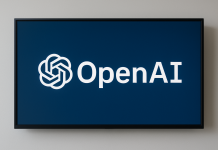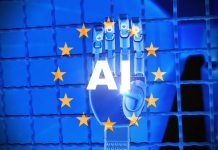Artificial general intelligence (AGI) remains the ultimate goal for many AI companies. It’s the point where AI can think, reason, and learn like a human. But according to Demis Hassabis, CEO of Google DeepMind, one core weakness is stopping us from getting there — inconsistency.
In a recent episode of the Google for Developers podcast, Hassabis explained that even the most advanced AI systems can still fail at surprisingly basic tasks. Models like Google’s Gemini can win gold medals at the International Mathematical Olympiad, yet still make mistakes in high school-level math problems.
“It shouldn’t be that easy for the average person to find a trivial flaw in the system,” he said.
Uneven or “Jagged” Intelligence
Hassabis described today’s AI models as “uneven” or “jagged” intelligences. In some areas, they outperform humans. In others, their weaknesses show quickly. For example, a model might excel at complex problem-solving in mathematics but fail to apply similar reasoning to a simpler puzzle.
This view matches what Google CEO Sundar Pichai has called artificial jagged intelligence (AJI). Speaking on Lex Fridman’s podcast earlier this year, Pichai used the term to describe AI that is strong in some capabilities but lacking in others.
Why It Matters for Business Leaders
For companies investing in AI, inconsistency can create risk. If a model gives an incorrect answer in a business-critical context, it could lead to bad decisions, compliance issues, or reputational damage.
B2B organizations often use AI for customer support, data analysis, market forecasting, and content generation. Inconsistent reasoning could affect each of these. A chatbot might answer 90 percent of queries correctly, but the 10 percent it mishandles could damage trust. A forecasting tool might produce accurate predictions most of the time, but an occasional flawed output could cost millions.
For business leaders, the takeaway is clear: AI can be powerful, but its limitations must be factored into strategy, governance, and risk management.
Beyond More Data and Bigger Models
Hassabis stressed that solving inconsistency will require more than scaling up data sets and computing power. The missing capabilities lie in reasoning, planning, and memory. These are core cognitive skills that humans use to connect ideas, anticipate outcomes, and recall relevant information.
In his view, AI research needs to focus on improving these capabilities. That includes developing new training methods and architectures, not just larger models.
Another area Hassabis highlighted is testing. He called for “new, harder benchmarks” to measure what AI is truly good at and where it fails. Current tests often highlight strengths but don’t always reveal weaknesses.
OpenAI’s Perspective
Google DeepMind isn’t alone in seeing these gaps. Ahead of the GPT-5 launch last week, OpenAI CEO Sam Altman made a similar point. While describing GPT-5 as a major improvement, he said it still falls short of AGI.
“One big one is this is not a model that continuously learns as it’s deployed from the new things it finds,” Altman said. For him, the ability to learn independently and adapt in real time is a defining feature of AGI.
Altman’s comments underline the fact that even leading AI labs are facing the same core challenge: building systems that are not just intelligent, but consistently intelligent across all contexts.
The Road to AGI
The race to achieve artificial general intelligence is far from over. Hassabis has said he expects AGI could arrive within five to ten years, but only if researchers can address inconsistencies and other missing capabilities.
For now, B2B leaders should approach AI with a balanced mindset. These systems can offer significant efficiency gains and open new opportunities, but they need oversight. Testing, validation, and clear guardrails are essential when integrating AI into critical operations.
As the technology evolves, the winners will be organizations that can leverage AI’s strengths while managing its weaknesses. That means not only investing in tools but also in processes, training, and governance.











